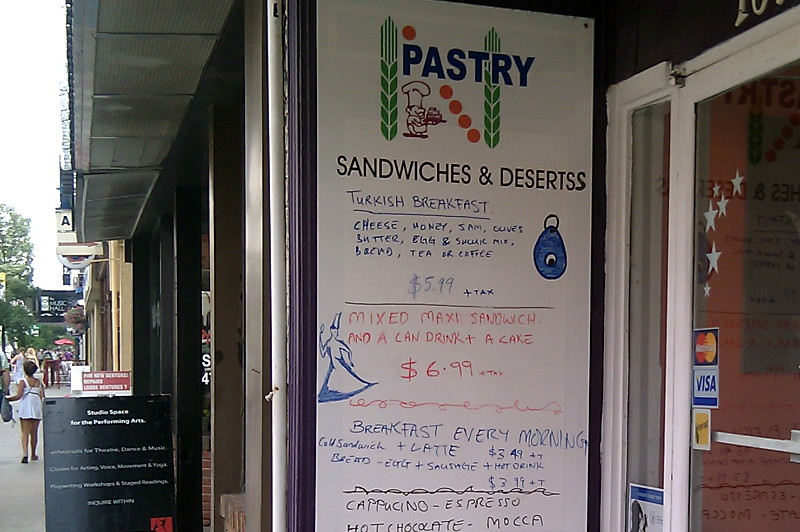
Someone told them that their sign was missing an “s” in “desserts” but obviously neglected to specify where it should go.
On an unrelated note, I just noticed that desserts backwards is stressed.
Random Wanderings and Wonderings

Someone told them that their sign was missing an “s” in “desserts” but obviously neglected to specify where it should go.
On an unrelated note, I just noticed that desserts backwards is stressed.
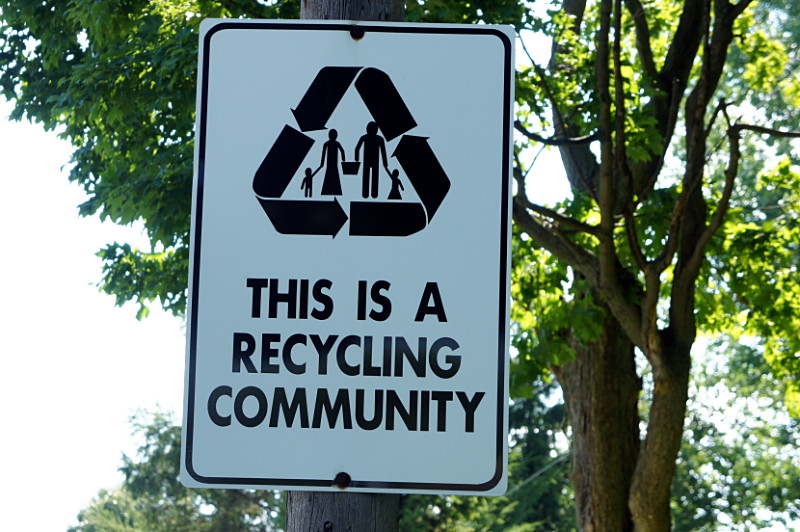
A happy family carries their blue box out to the curb together in this rather idyllic representation of recycling.
As the person who has set the household recycling out for collection since the inception of the blue box program, I can assure the makers of this sign that it’s a solitary, thankless task, frequently undertaken in darkness of night or rainness of morning while cleaning up the mess made by raccoons attracted by the fragrant jars and cans. Never once has anyone held my hand and merrily skipped to the curb with me. I’ve yet to experience the communal joy of recycling with my family as we carry the bin like the Ark of the Covenant to the curb, where Belloq will ritually examine its contents. I’ve never seen mother and daughter in floor-length dresses solemnly accompanying the bin to its final resting place beside the road.
Indeed, when I look up and down the street every Wednesday morning, I see mostly solitary men and women in pymaja pants or nightgowns, flip-flops or boots (depending on the season), and all as bleary-eyed and bored as me, dragging their bins out from under the veranda at some hour so wee it barely qualifies as a time.
But I still think that this is a great sign.
(Seen in Cobourg, which would have you believe that it’s a family-oriented recycling community.)
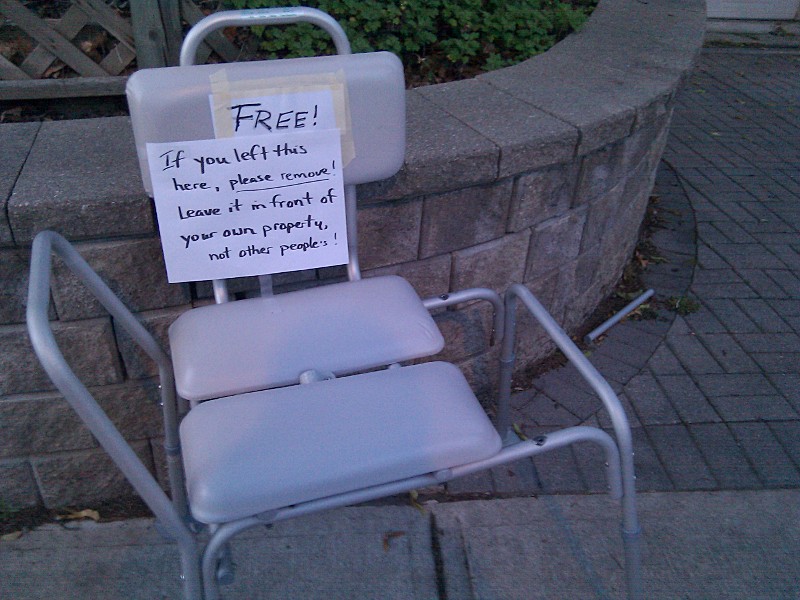
Sign #1: FREE! Sign #2: If you left this here, please remove! Leave it in front of your own property, not other people's!
My regular readers know that I love a good sign, especially when there’s some well-deserved snark involved. And this snark is wholly deserved. Oh sure, leaving a chair at the curb for a garbage picker is the best kind of recycling, but I’ve got to agree with this homeowner who wrote this sign: keep your freecycling at your own curb, people. Now if I could just find someone to nail a turd bag to this chair and someone else to pronounce it fit for dog pee, you’d have the best of my neighbourhood signs in a single location.
People of a certain age will remember Bargain Harold’s department stores, which went bankrupt in 1991. More than twenty years later, the name still appears on the façade of the West Rouge Plaza at the corner of Island Road and Friendship Avenue (no kidding) in Scarborough:
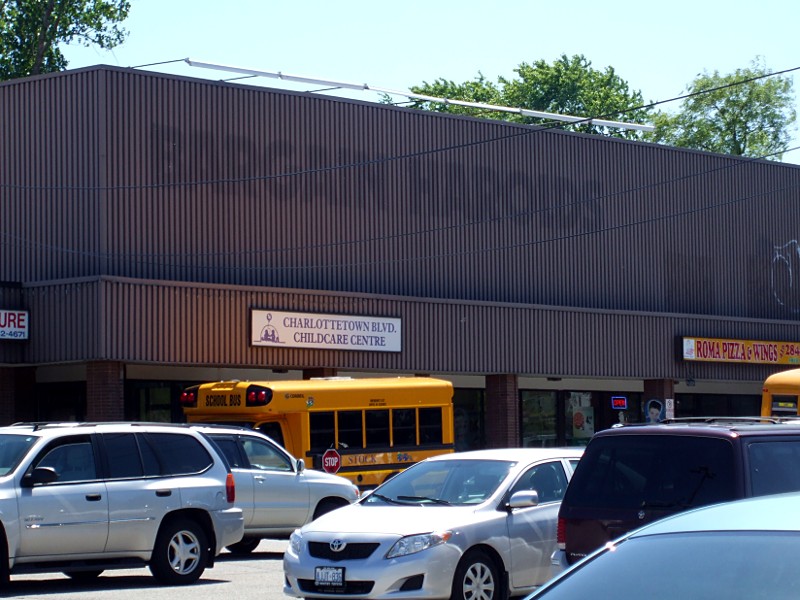
I didn’t have a Bargain Harold’s in my neighbourhood when I was growing up, but we did have Kresge and Woolworth, along with Bi-Way and Consumers Distributing not too far away. Zellers arrived later, replacing the local Eaton’s. Here are some random discoveries you make on the first page of a Google search for “Bargain Harold’s”: the founder, Harold Kamin, died two years ago; the Urban Dictionary says that a Bargain Harold is, well, pretty similar to every other definition in the Urban Dictionary; and this commercial:
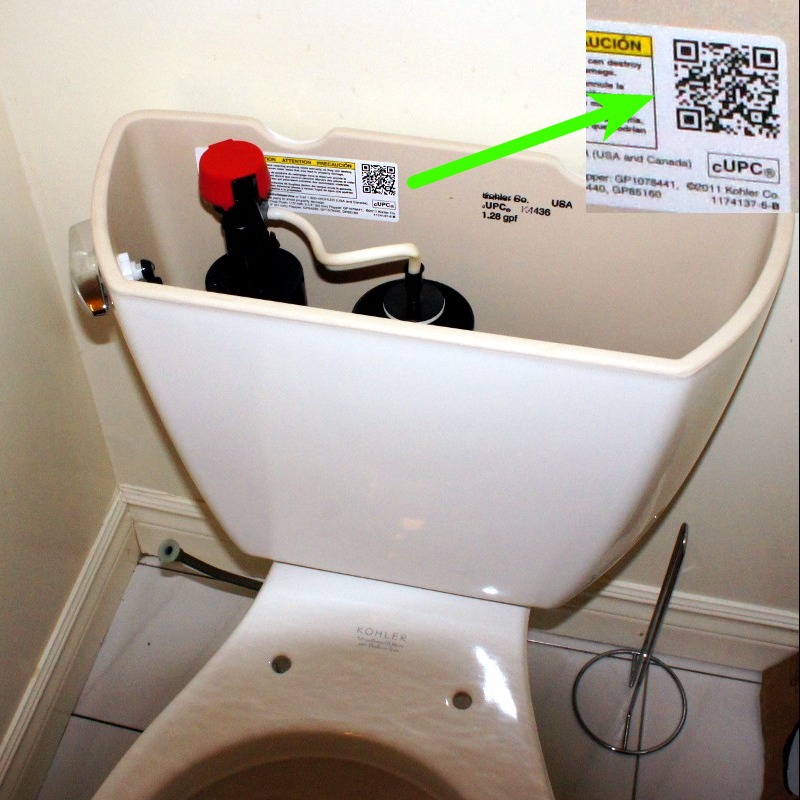
The inside of the tank on my new toilet has a QR code! How geeky is that? I had to stop the installation to wash up and grab my phone to see what this important message could possibly be. I felt like Ralphie with his new Little Orphan Annie decoder ring. It turns out to be a link to www.kohler.com/qrktank1, which redirects to a PDF with steps for troubleshooting flush problems. I’ll fully admit that I thought it was the stupidest location in the world for a QR code, but now I think it borders on brilliant: can you imagine a world full of parts labelled with QR codes that take you directly to the appropriate service manual? It ought to be mandatory. Of course, the real test will be whether the link remains active for the entire 20+ year lifetime of this toilet.
Barely a year ago, I wrote about my surprise at seeing QR codes on a politician’s campaign signs; now they’re so ubiquitous that they’re inside my toilet. Which, some would argue, is where politicians have always been anyway.
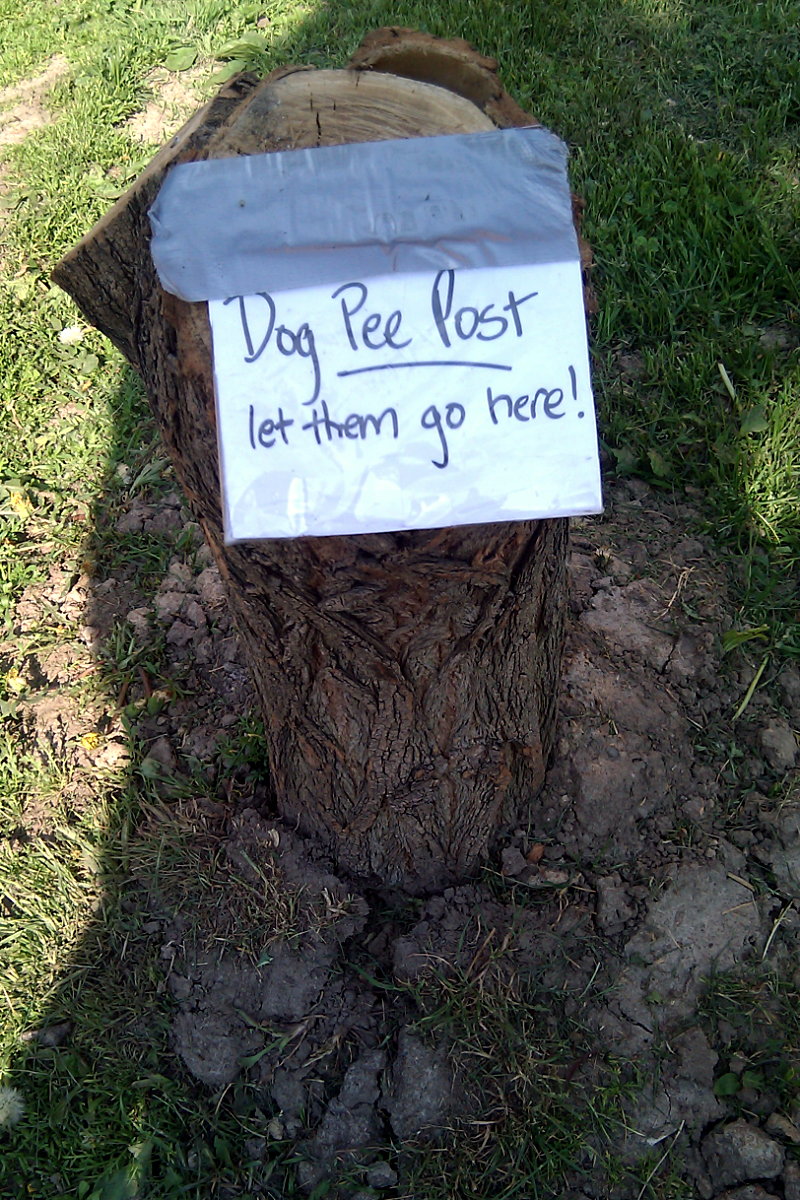
Now this is a twist: in a world of property owners who admonish dogs for using their lawns as toilets, here’s someone encouraging dogs to pee on this stump. Mind you, maybe the motive isn’t entirely altruistic: the pee post is on a sidewalk boulevard on Cambridge Ave and far from any homeowner’s lawn. I smell misdirection. My money’s on this guy.
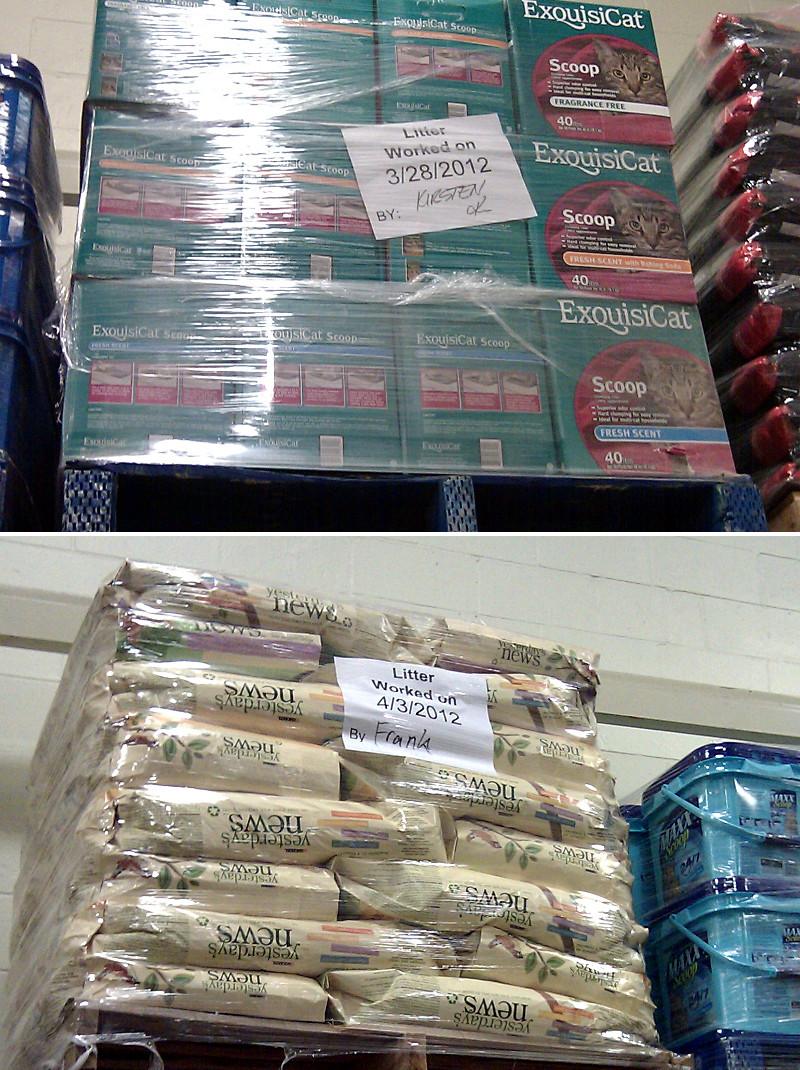
Have you checked our litter lately, honey?
I suppose I should thank Kirsten and Frank at PetSmart for verifying that the cat litter is in good working order every few days. I’m not sure I want to know exactly how they make that determination.
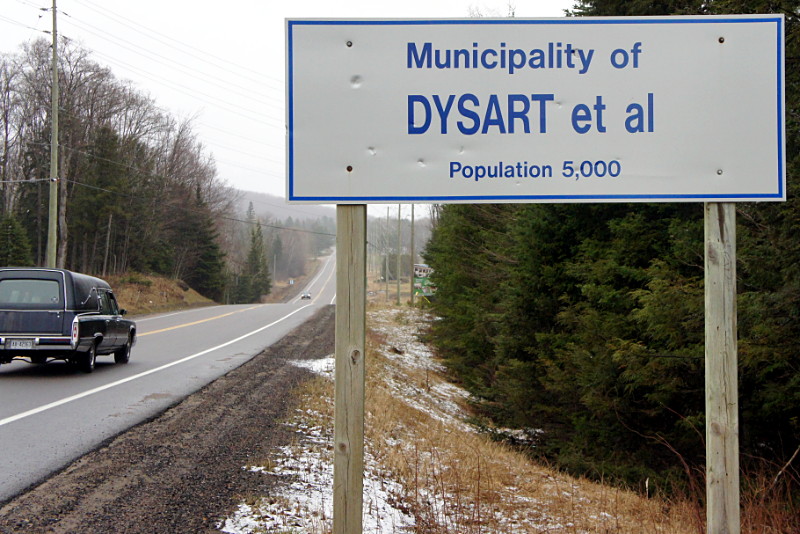
I suppose that you really have to come up with something shorter to fit on road signs when the full name of your municipality is the United Townships of Dysart, Dudley, Harcourt, Guilford, Harburn, Bruton, Havelock, Eyre and Clyde. The initialism of UTDDHGHBHEC doesn’t look much better and isn’t very catchy. But you’d think that since the initial amalgamation of the first four of these in Haliburton County in 1867, the township et al’s residents would have been able to let some of the names slip into history.
On the other hand, living in Toronto et al, formed in 1954 with a full name of the United City of Toronto, Scarborough, East York, Leaside, North York, Forest Hill, York, Weston, Swansea, New Toronto, Mimico, and Long Branch would have its charms.
Two signs about birds in Presqu’ile Provincial Park are meant to caution bird lovers. The first instructs people to approach a viewing area quietly so as not to disturb birds on the beach:
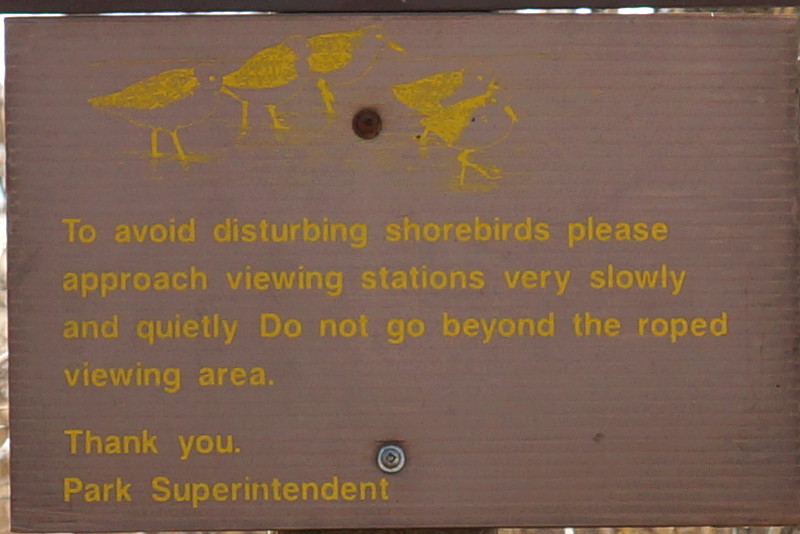
Another sign in the park alerts parkgoers to the danger presented by the bird hunt allowed in the park:
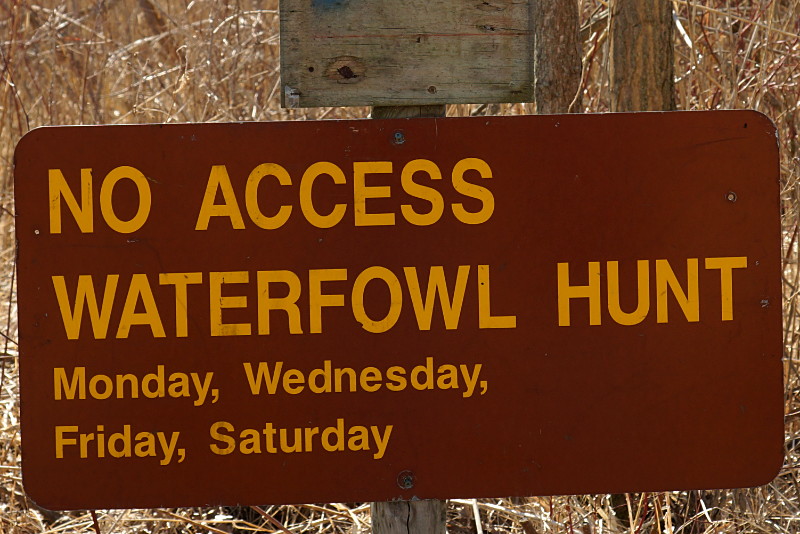
The perplexing thing is that these signs are both on the same post:
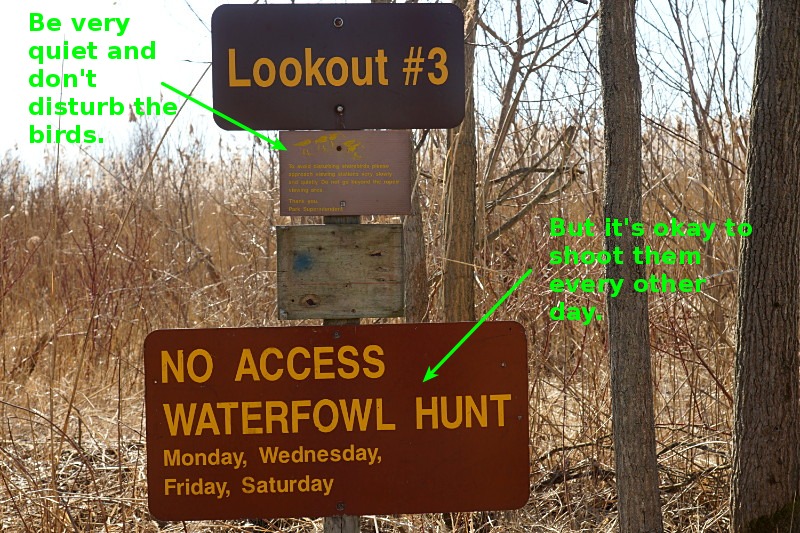
On Tuesday, Thursday, and Sunday, it’s Lookout #3. On Monday, Wednesday, Friday, and Saturday, it morphs into “Look out!” #3. I hope the hunters are using silencers so they don’t disturb the birds.
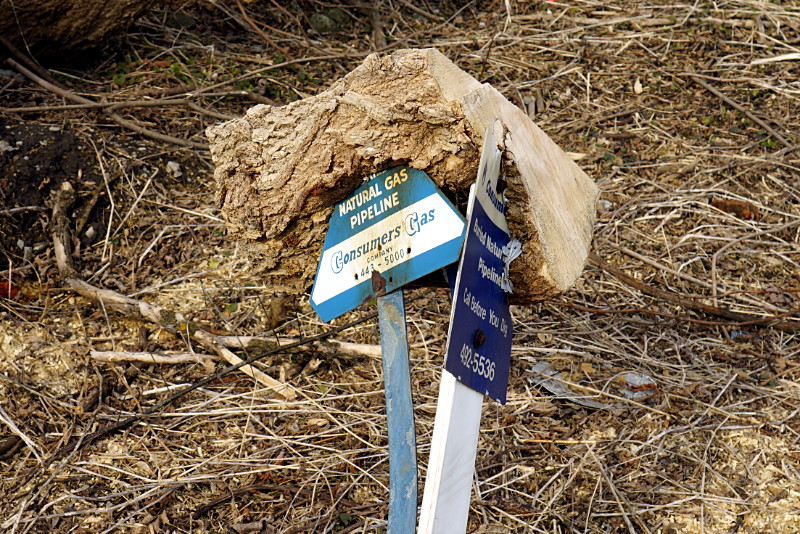

These signs were being eaten by a tree until a crew came along a few months ago and chopped the tree down while clearing and marking a path above the pipeline. It looks like they couldn’t extricate the signs from the tree and chose instead to work around the obstruction, leaving a chunk of the tree still enveloping the signs.